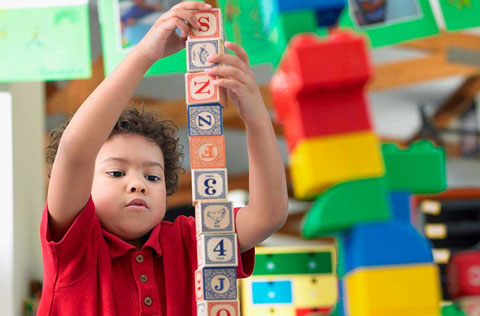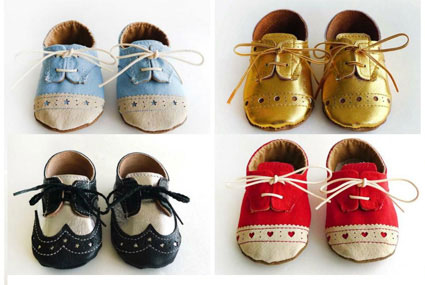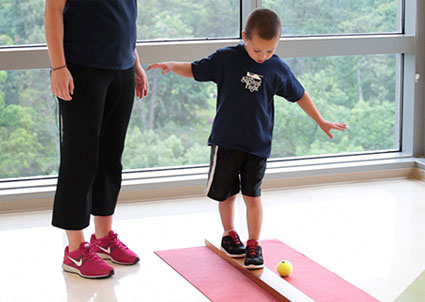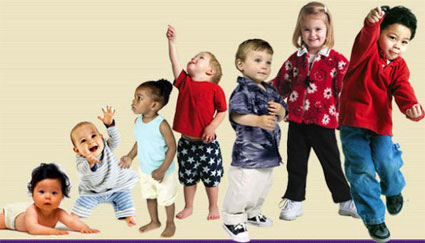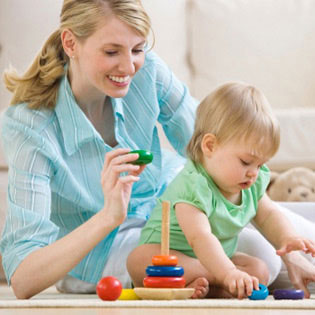Each phase of your baby’s development is exciting. But the real fun begins when your baby starts crawling. It is a learning experience for both of you. It is your baby’s first method of trying to get on his or her own feet efficiently. Also, it may be the first way your baby will get moving. Your baby will start balancing on his or her hands and knees, then figure out how to move forward and backward simultaneously strengthening the muscles that will soon
enable him or her to walk independently. Your baby will start scooting around your home in no time.
At What Age Do Babies start Crawling?
Mostly babies start crawling between 7 and 10 months of age, and master it by a year. Your baby may not crawl but opt for other ways of locomotion by this time, like bottom-shuffling, slithering on stomach, rolling across the floor, or may move directly to pull up, stand, cruise, and start walking. Getting mobile is important, be it however.
How Do Babies Learn Crawling?
Have a quick look at how babies learn to crawl gradually.
6-7 Months: Tummy Time
In the beginning, your baby will spend a lot of time on this tummy, which is called tummy time. He or she will learn to rock back and forth on their tummy and then gradually, will use the momentum from rocking to pushing himself or herself forward. This strengthens his or her muscles.
Your
baby may start commando-crawling by pulling along the tummy using the forearms. Finally, he or she may get up on all fours and rock back and forth, with arms straight and body parallel to the floor. If your baby is not doing a lot of tummy time, do not worry, he or she may be busy learning to roll over, crawl, or walk.
8-10 Months: Crawling Time
Your baby may be able to sit well with support by 8 months of age. Now he or she can look around by
moving head up, and may likely start crawling as the arms, legs, and back muscles are strong enough to keep him or her from falling on the floor as he or she gets up on hands and knees. Soon he or she will figure out that pushing off the knees is all what he or she needs to go mobile and soon will learn to go from a crawling position back into a sitting position.
Your baby may master cross-crawling by moving one arm and the opposite leg together while moving forward, rather than using arm and leg of the same side.
1 Year: Crawler
By a year, your baby will be a really competent crawler and will be keen to tackle any challenge, including the stairs. As you know, practice makes perfect.
Your Responsibility While Your Baby Learns Crawling
- Make sure your baby spends a lot of time on floor; else he or she cannot do tummy time.
- Place a towel or cloth around his tummy and support him or her to teach the rocking movement.
- Grab both ends of the towel around his tummy upward to bring him or her up on all fours.
- Try dangling a toy just beyond your baby’s reach so that he or she tries to grab it with hands and move forward.
- Make sure your house is childproofed, with special emphasis on stairway gates.
- Create obstacle courses with pillows, sofas, and cushions that will help improve your baby’s confidence, speed, and agility.
- Always be around your baby to keep an eye in case he or she gets into difficulty.
- Keep the floor clean and keep an eye on electrical hazards and safety issues of your house.
- Clean your baby’s hands and feet after a lot of time is spent on the floor.
Physical Development and crawling of a baby
In case you're similar to most new parents, you may gaze at your infant in wonder and enthusiastically anticipate foreseen achievements, such as giggling, sitting up, and crawling.
At this moment, it may appear as though your infant will never get mobile. However, in all actuality, they'll be climbing the furnishings and opening the baby doors before you know it.
Luckily, you don't have to show your child to slither/crawl. This is a characteristic formative achievement that happens when your child is prepared. All things considered, there are a couple of things you can do to urge your infant to get going. Also, obviously, there are things you can search for to ensure your child's gross engine aptitudes are on target.
Crawling is a difficult undertaking. It requires an infant to utilize both brain and body, and it depends on net engine, visual-spatial, and psychological abilities.
To start with, the muscles in your kid's back, neck, shoulders, arms, and center must be sufficiently able to help his/her weight and assist him/her with looking after parity. His/her vision additionally assumes a significant job. At the point when children slither, they utilize what's known as binocular vision, depending on the two eyes together to concentrate on one objective. They go to and fro between looking off into the separation and taking a gander at their hands, which helps construct profundity observation.
Your infant's psychological muscles will get an exercise too. Slithering infants create route aptitudes and remember realities. For example, they'll discover that they need to circumvent the end table and past the chair to get to the crate of toys.
Kinds of Crawling Styles
At the point when your infant begins to slither, he/she may depend on one of these crawling styles.
Classic: Moving one arm and the contrary leg together simultaneously to push forward
Scoot: Dragging the base over the floor
Crab: Moving with one knee twisted and the other expanded, either forward or sideways
Commando: Lying level on the stomach and utilizing the arms to push ahead
In reverse: Moving in a regressive bearing while at the same time slithering
Luckily, odd slithering strategies for the most part don't mean anything is wrong. Interestingly, the child is occupied with self-headway. Take a stab at getting down on the ground and giving him how great slithering is done, and your child may simply get on the conventional strategy.
Instructions to Help Your Crawling Baby
Since children want to move around, helping them figure out how to crawl is less about instructing, and progressively about giving them chances to rehearse the aptitudes and skills they need. Here are five things you can do to enable your child to figure out how to slither.
1. When your infant is moving, anticipate that he/she should investigate everything within the child's reach. Despite the fact that you previously did the entire infant sealing/baby proofing thing, it's imperative to do a second, increasingly intensive, round before your child makes a move. On the off chance that you don't have cover, buy a couple non-slip carpets or beautiful floor tangles so your infant's little knees get a break from the hard surfaces. In the event that your home has wood floors, ensure there aren't any revealed nails or free splinters that could hurt your infant.
2. As your baby clears his/her path through the house, anticipate that he/she should experience a scope of feelings: excitement when he/she finds something, disillusionment in the event that you evacuate it or remove it, and disarray or dissatisfaction when a hindrance obstructs his/her way. You can anticipate taking part in a close steady round of "follow the pioneer." Anywhere you go, he/she will be directly behind you!
3. With all the more slithering practice, your child will start to hurry up (and attempt to beat you whenever he/she sees a treat) and he/she will start moving up and over things, similar to pillows, couch cushions, and staircases Continuously watch out for him/her, and set up a well-being entryway for the steps.
4. Give your child satisfactory belly time
While children ought to consistently rest on their backs, it is acceptable to give them some belly time each day while they are conscious. At the point when your infant invests energy lying on their stomach, they work on raising their head off the ground, which reinforces their trunk and back and gets their appendages going openly. Both of these exercises help manufacture the muscles they'll requirement for slithering or crawling.
A few infants hate stomach time, particularly from the start. On the off chance that your little one shouts or fights, have a go at doing it just in short blasts and for only a couple of moments one after another. You can likewise make floor recess increasingly fun by giving them a couple of moments in various positions, including sides, back, and stomach. Lastly, attempt a holding stomach time by resting on your back and putting child on your belly, so you can take a gander at their face while they work on lifting their head.
5. Diminish the measure of time in walkers and bouncers
Children who don't invest a great deal of energy in the floor may take more time to build up the quality they have to slither. In spite of the fact that infant swings, walkers, bouncers, and other infant seats are an amazing method to keep your child securely restricted, giving your infant floor time supports investigating and development.
6. Give your infant some additional inspiration
Children as of now have an intuitive drive toward development, however you can make it somewhat more energizing and spurring by giving them something to go after. Give putting their preferred toy a shot on the ground during belly time, however put the toy simply far off. This will intrigue them and give them an objective to work for as they're attempting to move. Another stunt is putting a mirror on the floor before your infant. As children see their appearance in the mirror, this can spur them to hurry, and afterward progressively slither, to the item.
They'll presumably attempt some inventive approaches to get to the toy, such as rolling and extending. You may make some hard memories not helping them, yet in the event that you can oppose the impulse to move the toy somewhat nearer, you may be astounded at how quiet they can be as they work to take care of the issue all alone.
7. Give an agreeable space to them to investigate
Set up a zone on your floor that has intriguing toys and things they can securely investigate. On the off chance that you have an uncarpeted floor, you can enable your child to begin hurrying over the floor a little sooner by dressing them in long sleeves and jeans. Garments on a smooth surface will assist them with moving with less erosion, which will make it somewhat simpler for them to begin.
8. Jump on the floor and slither with your child
Your infant may begin to crawl sooner in the event that you or his/her sibling jumps on the floor with them during stomach time. In all actuality, regardless of whether an infant sees their preferred toy a couple of feet away, they may not realize how to start hurrying or crawling. Be that as it may, on the off chance that you give them what to do, they may mimic your development and endeavour to crawl toward the object.
After your baby has mastered crawling, soon he or she will pull himself or herself on everything he or she can reach, and once gets the feel of balancing on legs; he or she will be ready on her own and cruise while holding the furniture. Then it is just a matter of time until he or she is walking, running, jumping, and leaping

















